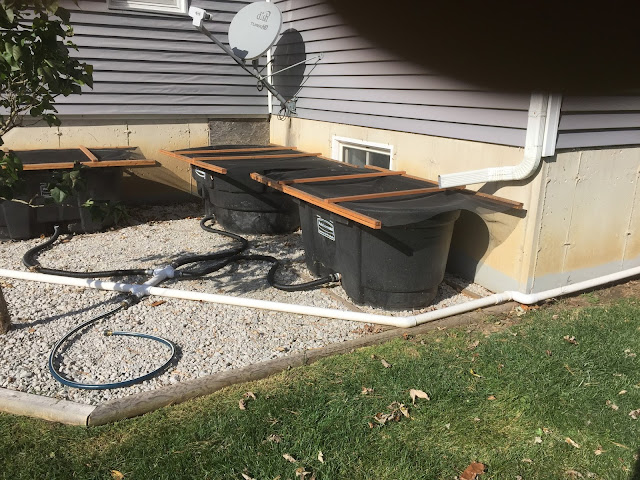Water is an essential natural resource for life. Even though 70% of the Earth is covered by water, only a fraction of it is potable, and scarcity is a serious regional problem.
Residential Water Collection
One way that individuals can relieve demand on local water supplies is to gather and store rainwater that falls on their roof. Jeff Guo of The Washington Post wrote an article in 2015 about this issue in the state of Colorado, one of many dry states in the western US where water laws have discouraged or flat outlawed the collection of rainwater on domestic property. The issue is called prior appropriation, meaning other people have already claimed the water that falls on your roof.
These laws are being changed as western states face the need to satisfy water demands. It's legal in Utah to have up to two 100 gallon containers for collecting water; if you take the time to go through the free registration process, Utah is okay with you having a total of 2,500 gallons of stored water on your property.
Here is an excellent site from Utah State that has great info about what Utahns can do to get started on rain water harvesting.
It can take some investment of both time and money, but it can significantly improve the health of your garden. My dad set up a system of water collection out in Indiana, and it's made a significant difference. Here's a picture of some of the tanks he uses, set up to collect water as it flows down the gutters of the house:
Altogether, my dad has nine of these large tanks totally 1300 gallons. Utah allows twice that volume of water to be stored on your property, so long as you've registered with the Utah Division of Water Rights (because Utah is a drier state that experiences drought more than midwestern states like Indiana, where it rains on a weekly basis).
After buying the tubs, he stapled some screens to some pieces of wood to act as a barrier against mosquitoes and bugs and debris getting into the water, to help keep it clean. He took the time to connect all the tubs with hose and pvc pipe, so that it can all be channeled to a single outlet point in the back yard.
If you only have one tub or container, it's easy to have a simple valve control the flow. Otherwise, you can hook them all together and have the pipes meet at the one valve, like my dad did here:
That hose connected to the pipes can be easily connected to a sprayer on a normal hose. My dad took the time to add a pump to the line, so it's easier to draw the water through the line to spray in the garden:
The Utah State website shows other designs besides tubs, like barrels:
These kinds of designs may better fit smaller yards. They also can look nicer than the large black tubs that we used in rural Indiana (if that kind of thing matters to you). The basic idea is the same:
Your downspouts direct the water to your tank, where it's stored until the tank is full. Then the excess water spills out and drains away like it would if your downspout just emptied into the yard, or ditch, or wherever.
One of the primary reasons these water systems have been opposed is the concern that diverting rainwater would deprive rivers and streams of their sources of water. However, a 2007 study conducted for the Colorado Water Conservation Board found that "precipitation collection systems, in conjunction with drought tolerant landscaping and efficient irrigation, may reduce outdoor water demand by up to 88 percent" (here's the source for that quote). Only an average of 3% of rainwater was actually found to return to the stream or ground; the rest evaporates back into the water cycle and falls again later as rain, so this system of productively using it is one excellent way to make use of the limited resource in places where it's needed most.
Not to mention, plants seem to respond better to rainwater than they do to tap water or well water. I don't have exhaustive testing to back that up, but there is the personal experience from my parents' use of this process over the last several years.
contributed by William
Subscribe to:
Comments (Atom)






